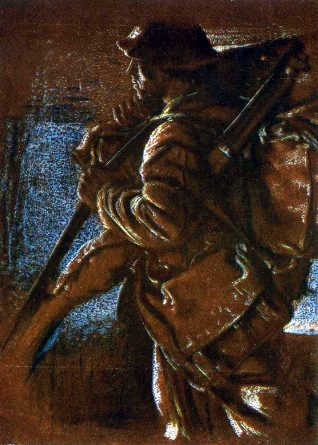Background information

Percy Whitehouse was a Private with the Royal Sussex Regiment, 9th Battalion. He died near Ypres around the 14 February 1916.
Herbert Percy Whitehouse was brought up near Epsom, Surrey. He married his wife Ethel Wilkins at Epsom in the June quarter of 1906 and had two children with her (born 1907 and 1910).
The couple subsequently moved to Brighton, probably taking up residence in the same house in Newport Street where Ethel died in 1963.
Percy, as he was known, was a Private with the Royal Sussex Regiment, 9th Battalion. This Battalion was formed at Chichester as part of Kitchener’s recruiting drive of 1914. The newly recruited battalion went into camp on the South Downs around Brighton. It became part of the 73rd Brigade of 24th Division. After training the troops were despatched to France on 31/08/1915 and a month later they suffered heavy casualties at the Battle of Loos.
Percy’s letters to Ethel were written in November and December 1915. He died a few months later, during the German diversionary attacks that took place on Hooge near Ypres in February of 1916. This commenced at the beginning of February and lasted until the 19th of that month. Despite heavy shelling and the detonation of sapped mines, the 24th Division temporarily halted the attack. However the Royal Sussex Regiment suffered 139 casualties in the offensive of 14th February 1916.
The date given on the Menin monument (20/02/1916) for the death of Percy is marked upon a panel and is indicative that there is not a known grave.
Private Herbert P Whitehouse was awarded the Victory Medal, the British Medal and the 1915 Star.
Additional commentary
The experience of the Whitehouse family is typical of many in WW1. Herbert Percy Whitehouse joined the army in the first days of the war and seems to have fought with the 9th Battalion of the Royal Sussex Regiment, which was raised throughout the county and trained in Chichester. He served at the battle of Loos where the British casualties included another young Sussex man, Jack Kipling, son of the author Rudyard).
In March 1916, the Royal Sussex Regiment was taking part in the battle of Ypres, where Percy was killed. The letters mention that he served with the Battalion bombers – troops who used hand grenades against the enemy. The expression ‘bombing along’ refers to the way that the bombing party would have run along an enemy trench throwing grenades into dugouts. Percy may have been one of these men, or he may have been responsible for priming the grenades, or he may have protected the bombing party with rifle and bayonet. In any case, it was one of the most dangerous and unpleasant jobs troops were expected to do, so he was clearly a respected soldier.
An interesting aspect of this family’s experience is that sadly, Herbert was not simply killed, he was ‘blown to pieces’. He appears to be listed on the Menin Gate memorial, which records the names of troops who have no known burial place. As the army only requires twenty five percent of a body to count as a ‘complete for burial purposes’, it is clear that this is no exaggeration. The reaction of the family to this news is revealing. For years afterwards, his wife simply told people that he had been shot and could not bring themselves herself to describe the actual circumstances. This makes an interesting contrast with the soldiers view that the best way to go was that it should be ‘sudden and no suffering.’
By Seb Phillips, history teacher, Cardinal Newman school




No Comments
Add a comment about this page